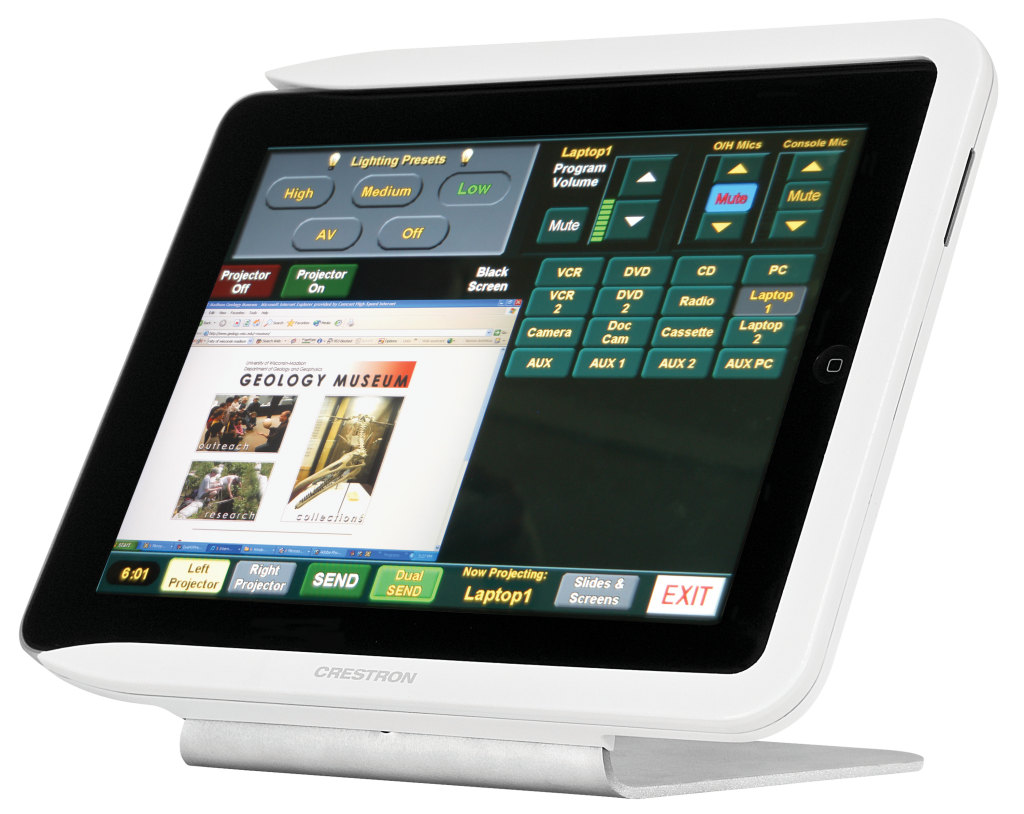System Control

A control system will automate the critical functions of your AV system.
With a properly designed system, you don’t have to remember (or even know) the steps it takes to make your system work.
For instance, press the DVR button and the control system turns on the projector, lowers the screen, switches to the right inputs, adjusts the volume level, closes the draperies, and even dims the lights. The DVR controls appear on the touch panel, ready for you to press play or access special features such as subtitles or bonus content.
In doing all this, a control system from Lewis Sound & Video
- makes it much easier and faster to accomplish the function
- eliminates many mistakes and much confusion
- eases AV staff system support
- cuts down on presentation staff training
- allows presenters to concentrate on their message
The system can control or automate almost anything used in a classroom, meeting room or public area: sound, projection, cameras, video or audio conferencing, music or video sources, electronic whiteboards, lights, screens, motorized draperies, heating, air conditioning, security systems and more.
You can buy a very simple, inexpensive system or something quite sophisticated. It all depends on how complex your AV system will be and how much you need to simplify its operation.
Design considerations
Here are some questions to consider in the design of your room and AV system:
- What equipment do you need to control?
- Who will operate the control system? What is their level of expertise with AV systems?
- How much help will they need?
- Do you have an AV staff to step in as needed, and how much time do they have for support?
- How much control over core functions and adjustments should you give to users?
- Where should the control panel be located?
- Do you need more than one control panel in the room?
- Would a wireless portable panel be helpful?
There are also some trade-offs to consider. A more sophisticated control system will be easier to use, minimizing training and support time; but of course it will be more expensive. Lewis Sound and Video recommends that you weigh the initial cost versus the long term savings on training and support of your staff.
If you’re building a multi-room facility, consider networked controls.
For example, Crestron’s Fusion system allows you to monitor and control a room from anywhere in the building or campus via your local area network or the Internet. It allows staff to support presenters without needing to physically go to the presentation rooms. It also tracks maintenance issues, such as lamp usage, and can turn on AV systems so they’re ready when a presenter enters a room or make sure all systems are turned off at the end of the day.
Types of control panel
You have a number of choices as you consider control panels.
For a small system, an affordable hand-held or wall-mounted button panel may be all you need, or you can use Apple or Android tablets and phones.
Many panels can be used as preview monitors, so the presenter can cue a videotape or DVD prior to the image being projected or monitor the presentation without turning around to observe the screen. Larger panels can minimize page-flipping and ease navigation, but their most popular feature is the increased readability you get when you are able to use larger buttons and text.
Contact Lewis Sound to learn more